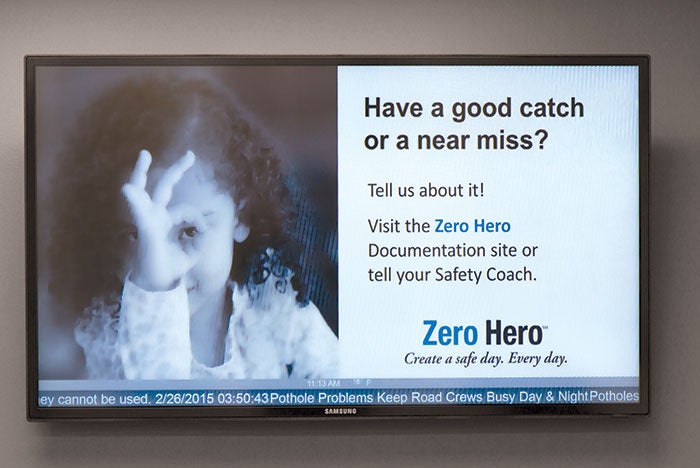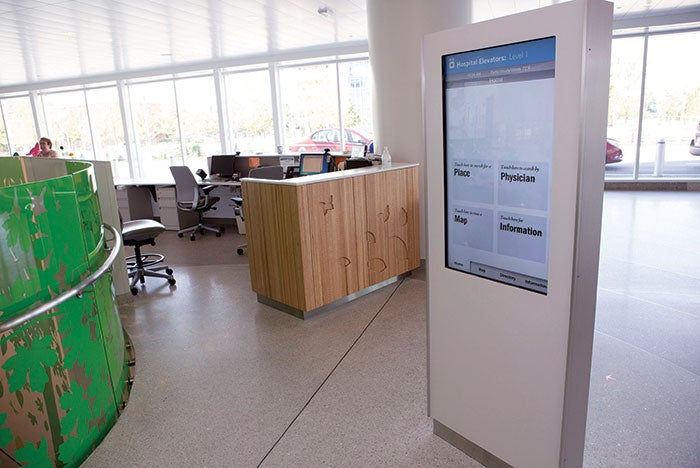Fine tuning digital wayfinding communications

Digital signage allows facilities professionals to tailor a message to specific staff.
Digital signage-based wayfinding offers many new technological advances, from simple interactive touch-screen monitors that show the current location and end destinations, to systems that can print instructions or interface with a mobile device. Facilities professionals should understand the goals for the audience before embarking into a full-scale, interactive wayfinding solution.
- Tailor the message. In a large organization, instead of having one content playlist on staff-facing digital signs, create messaging for the specific groups of staff that see each digital sign. For example, the digital sign in the break room for front-line staff is the perfect place to add messaging on safety, protocol changes and staff recognition, while the digital sign in the break room of the administrative offices will be better suited for messaging related to the strategic plan and major goal accomplishments. Consider having one global playlist for wide-appeal messages and things that apply to all staff (i.e., human resources information) and then add more localized content to each individual digital sign (i.e., department or team communications). By drilling down and creating content specific to the type of employee seeing each digital sign, engagement and value in the overall channel will be increased.
- Tailor the delivery. Some playout options for messages are incredibly helpful while others should be avoided. In the case of sound, thoughtful use is always best. A digital sign in an applicant lobby might be the ideal place to showcase an organization’s YouTube channel. However, the impact to the staff member seated at the desk next to the sign should be considered. The same goes for using sound in high-traffic spaces with lots of commotion. The odds of viewers hearing the full message and understanding it are incredibly slim. Aim for purposeful use of sound to reduce the chances of digital signage content contributing to white noise.
- Protect the purpose. Digital signage can replace visual clutter made up of paper communication in the form of poster campaigns, flyers and overwhelming directories that quickly become outdated and are not cost effective to maintain. Often intertwined and both guilty of cluttering hallways and wall space, wayfinding and marketing are two solid reasons to engage in a digital signage program. To stay true to the purpose of the installation, keep the audiences in mind. A successful solution is one that provides the audience with easy answers to their questions.
Kim Dwyer is manager of internal communications within the marketing and public relations department at Nationwide Children’s Hospital, Columbus, Ohio. She can be reached at Kimberly.Dwyer@nationwidechildrens.org. She wrote this article based on research and notes supplied by Alisa Pinciotti, senior interior designer at the hospital.


